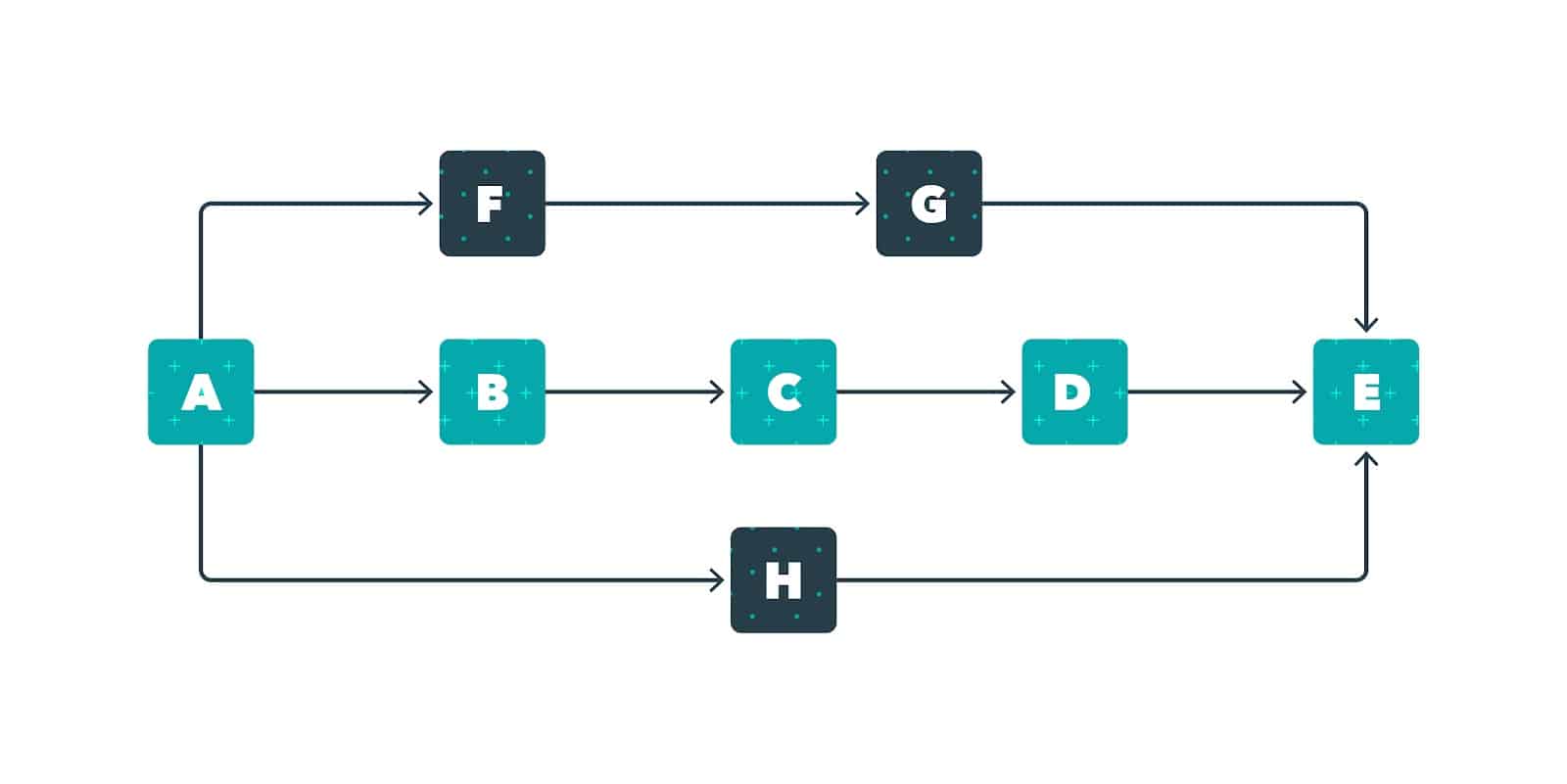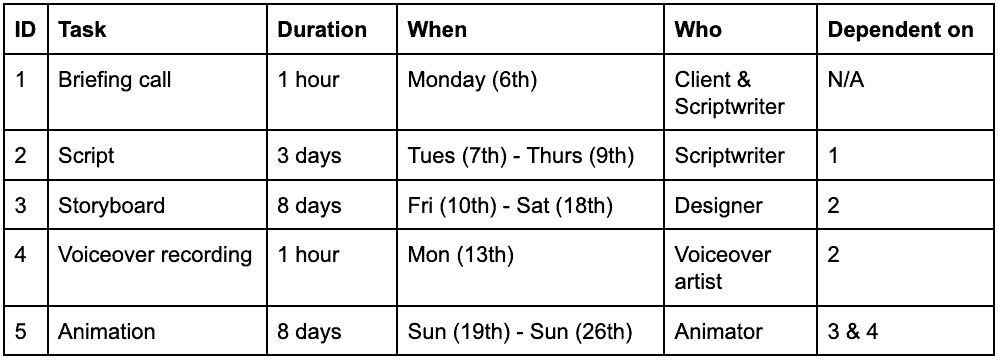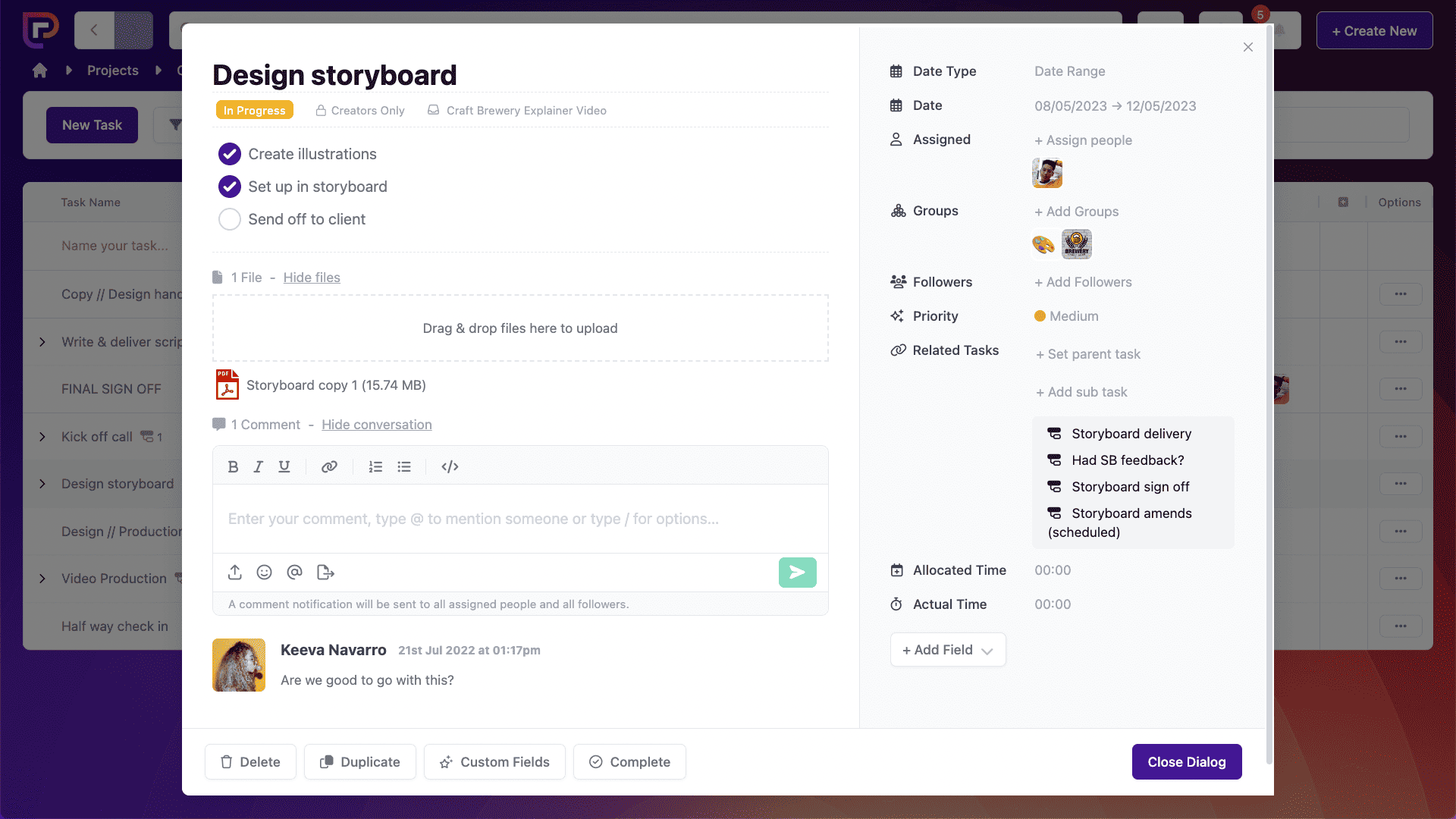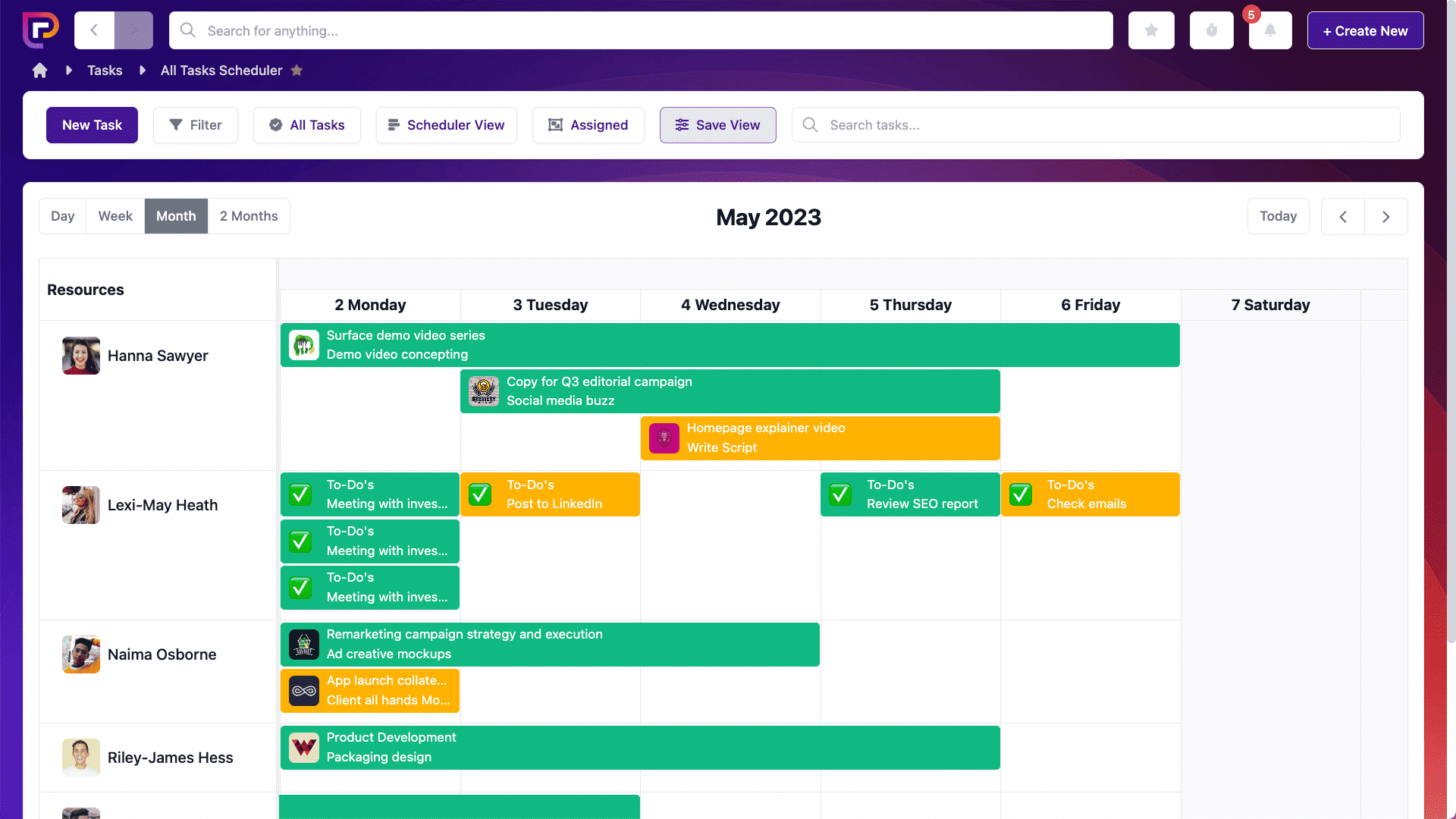Last updated on 30th June 2023
In this article we’re going to take a look at the Critical Path Method and answer the question: What is a critical path in project management?
Project management is the future. According to Harvard Business Review, by 2027 around 88 million people worldwide are likely to be working in project management, and the value of project-oriented economic activity will have reached $20 trillion.
However…
Research also shows that the majority of projects – around 65% – are unsuccessful. In other words, most projects fail and a lot of time and money is wasted.
To avoid this failure, project managers need to manage projects effectively. And that’s where the critical path method comes in.
So, let’s get into it…
What is the critical path method? A definition
The Critical Path Method (also known as CPM) is a project management technique that helps you manage your project efficiently by calculating the shortest route to entire project completion.
The idea is that you identify all of the tasks required to complete your whole project, and then map out your tasks so that you can schedule your project in the most productive way and get an accurate project timeline.

The Critical Path Method is ideal for complex projects that have a lot of moving parts. By breaking a big project into smaller, more manageable tasks project managers can gain a better understanding of how to get from point A – Z in the most efficient way.
The history of the critical path method
Critical path finds its origins in the 1950s at the DuPont company. DuPont is a multinational chemical company, and has been involved in everything from developing Teflon to even playing a major role in the Manhattan Project.
Two mathematicians (James Kelley and Morgan Walker) who were working at the DuPont company in 1957 are credited with developing the critical path algorithm. They were looking for ways to avoid the costs of plant shutdowns and restarts caused by inefficient scheduling. Their research found that if they focused their efforts on performing the right tasks at the right times, they could avoid these issues. And so, CPM was born!
Prior to this, the company was simply flooding every problem they had with more labour in order to try and stay on schedule. By implementing the brand new critical path method instead, DuPont was able to save 25% on shutdowns.
How to implement critical path in project management
1. Define the scope of the project
The first step towards implementing the critical path method is defining the scope of your project. This means understanding all the tasks that need to be completed in order for you to consider your project a success.
So, for step one, make a list of all your project tasks. Pretty simple!
2. Divide your tasks
Step two involves looking at those tasks in more detail and dividing them up so you can better understand the when, who, and how of the tasks for your project.
This is important because some tasks will be critical tasks, some will be dependent tasks, and some tasks will be fine to work on in tandem. As a quick example, if you’re making a chicken sandwich then you can toast your bread at the same time as preparing your salad and/or sauce, but you can’t do either of those things unless the chicken is already cooked. So, the remaining tasks are dependent on the first task of cooking the chicken.
Once you get the hang of it, the critical path method can be used for pretty much everything!
3. Calculate the shortest route to completion
Step three – the final step – is about finding your project’s critical path. In other words, scheduling your tasks to calculate the shortest route to completion. CPM is all about efficiency, so if you can work on tasks in parallel then you absolutely should in order to complete the project in the shortest amount of time.
It can help to assign durations to your tasks here so that you can get a better understanding of how long everything will take. Sticking with the very simple chicken sandwich analogy, this would look something like this:

This is a very simple example of a project’s critical path, but hopefully you get the idea!
Critical Path Method examples
Now let’s take a look at some more concrete examples of the critical path method in action.
We’re going to give both a personal and professional example to really look at CPM from all sides and gain the best possible understanding of how to apply it when it comes to managing complex projects.
Planning a family holiday
Planning a family holiday involves a lot of different tasks, some of which can be done in tandem, while others are dependent tasks.
The first thing you need to do is make a list of the tasks for your whole project. For example:
- Research different locations
- Find accommodation
- Book flights
- Book airport transfers
- Buy sunglasses
- Pack suitcase
And anything else you might want to add to the above list!
The next step is to divide your tasks up, so Mum can be in charge of the location research and booking accommodation, Dad can be in charge of booking flights and airport transfers, and so on.
This is also where it’s important to identify those tasks that are dependent on one another. So, for example, the airport transfers cannot be booked before the flights or accommodation. But you can shop for sunglasses and pack your suitcase at any time!
The critical path for this project could look something like this:

Creating an explainer video
Now for a professional example. We know all about managing explainer video projects because that’s actually how Project.co first came to be! More on that here if you’re interested.
The tasks required for an explainer video project are:
- Briefing
- Scripting
- Storyboarding
- Voiceover recording
- Animation
- Music/SFX
Again, after listing these tasks the next step is to define and allocate them, and also find out which can be done in tandem. For example, the storyboarding process cannot start without the script. But once the script has been finalised, the voiceover can be recorded in tandem with the storyboard being created.
If we were to calculate the critical path for an explainer video project it might look a little something like this:

And that’s that! Why not try following these 3 steps for planning different projects in your life? It’s a great way to get used to the critical path method.
5 Tips for successful critical path management
1. Use a project management tool
Implementing the critical path method successfully relies on project managers having the best visibility of all tasks (critical tasks, dependent tasks, basically every single task required throughout the entire project!). Project management software can be very useful here.
The best project management tools – like Project.co! – allow you to not only view your tasks in a number of different ways, but allocate them to different team members, add files, notes, priority tags, and so much more.

Project.co allows you to manage as many different projects as you want with an easy-to-use interface that you can customise to match your branding. You can also invite your clients and stakeholders to collaborate.
2. Delegate responsibilities
Another key component of CPM is understanding who is responsible for what. This is crucially important if you have multiple tasks being completed in tandem, and it’s also necessary for dependent tasks (as team members need to know when it’s their turn to step in so that they can manage their schedule successfully).
For project managers, this means delegating these responsibilities and overseeing the schedule to make sure everything is moving smoothly along the critical path.
Again, project management software can help here because it makes it easy to view your entire team’s tasks at a glance.

Project.co offers a number of ways to visualise your tasks, including kanban, list view, calendar, or the scheduler view (seen above) which allows you to view multiple team members’ tasks all on one screen.
3. Map out your project visually
Visualising your project will help you to understand how to get from point A to point Z in the quickest way possible, which is what CPM is all about.
When using the critical path method, one of the best ways to map out your project visually is with a Gantt chart.
A Gantt chart is essentially a bar chart that illustrates your project schedule. You can see when each task is due, which tasks are dependent on one another, and which can be completed in tandem.
4. Create predictions
As much as we all wish for every project to sail through with no issues, the likelihood is that something unexpected will pop up. The best way to prepare for this is to make some predictions for what could go wrong and make a plan for what would happen if it did.
We’d recommend creating a list of assumptions and risks for your project before getting started. It’s also helpful to create a list of resources that you will need so that you have a clear understanding of the scope of your project before getting started.
5. Assign a project leader
The critical path method is all about efficiency, which means there’s going to be a lot of moving parts at any given time. It’s important for everyone involved to be focused on their own tasks to ensure that there are no bottlenecks and the project moves forward smoothly. But, additionally, it’s also important for one person to oversee the project to ensure everything stays on track.
In other words, to successfully implement the critical path method in project management you should assign a project leader whose sole responsibility is making sure that everyone else is managing their tasks.
Most projects see a couple of hiccups along the way, and it’s the job of the project leader to manage these setbacks as and when they occur so that your project can still be completed as quickly and efficiently as possible.
Final thoughts
Project management techniques like the critical path method help you keep your projects on track so you can complete more projects on time and on budget.
Interested in finding out about some more project management techniques? Take a look at this next: 10 Best Project Management Techniques for PMs in 2023.


